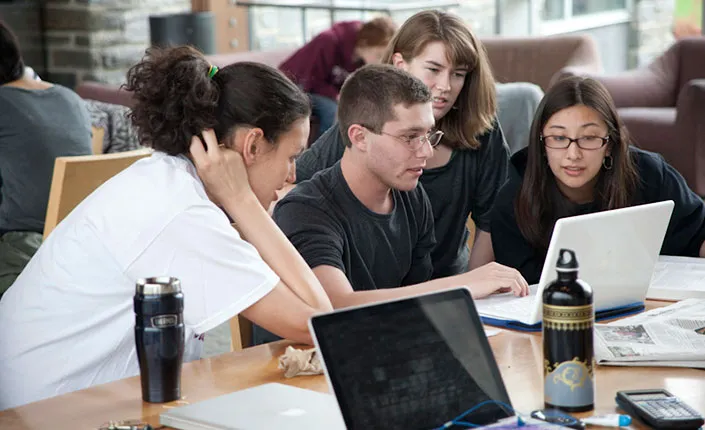Swarthmore Advances Academic Mission, Joins Internet2

With Internet2, students and faculty will be able to get work done more easily and quickly.
Swarthmore recently became one of the first liberal arts colleges to join Internet2, an international alliance of academic, private sector, and government researchers who collaborate and create through technology.
Joining Internet2, which will turbocharge the work of students and faculty, was an institutional initiative of the College — and the first official order of business signed by President Valerie Smith.
“Membership in this collaboration will empower Swarthmore to advance its academic mission in significant ways,” Smith says in a letter to the research collaboration's president. “We see great opportunities to further faculty and undergraduate research opportunities, strengthen existing collaborations between Swarthmore faculty and researchers at other member institutions, and build new collaborations.”
Internet2 will also help Swarthmore expand its cloud-based cyber infrastructure and provide access to the most advanced 100-gigabit networking technologies and a growing number of Net+ services. The most important immediate benefit, says Provost and James H. Hammons Professor of Chemistry Tom Stephenson, is empowering the College community to collaborate more effectively with other scholars on projects involving massive data sets and cloud resources.
“With this membership, we join a community of institutions of higher education, corporations, and affiliates all devoted to supporting our educational and research missions through cutting-edge technology,” he says. “We’ll also have an opportunity to learn from the innovations of others.”
Internet2 began in 1996 as a project among 34 universities. It now consists of 282 higher education institutions and dozens of corporations, government agencies, and educational groups. The organization has long focused on Research 1 universities but is now opening its doors to the liberal arts.
"There is growing realization that Internet2's portfolio of abundant bandwidth and cloud services have much to offer scholarship in small schools as well as large, and in the liberal arts as well as in the sciences," says Steve Wolff '57, principal scientist for Internet2.
“Given the importance of undergraduate research and the liberal arts in higher education, this is a space we needed to participate in,” adds Joel Cooper, chief information technology officer. “Internet2 opens that door, providing a low-latency, high-bandwidth, friction-free network.”
But what does that mean? Simply put, students and faculty will be able to get work done more easily and quickly. Instead of FedEx-ing hard disks full of large data sets back and forth, for instance, they can download them in five seconds. Instead of ordering a server from a magazine and setting it up under their desk, they can work on a stand-alone server in the cloud.
“Those are quantum leaps,” says Cooper, noting the technology would also allow for things like smooth simulcasts of the performing arts.
Internet2 will also put the College in a better position with grant proposals, Cooper says. The National Science Foundation, in particular, favors institutions with virtual infrastructure in place, and faculty members from the sciences have already started collaborative research.
Information Technology Services is working with academic departments to pave the way to Internet2, helping them to move existing work there and set up new projects on the new infrastructure. It will continue to raise awareness about the capabilities when students return in the fall.
“Our students," Cooper says, "are going to learn some very valuable skills they can take with them."
Visit the Internet2 YouTube page for more on the collaboration.



